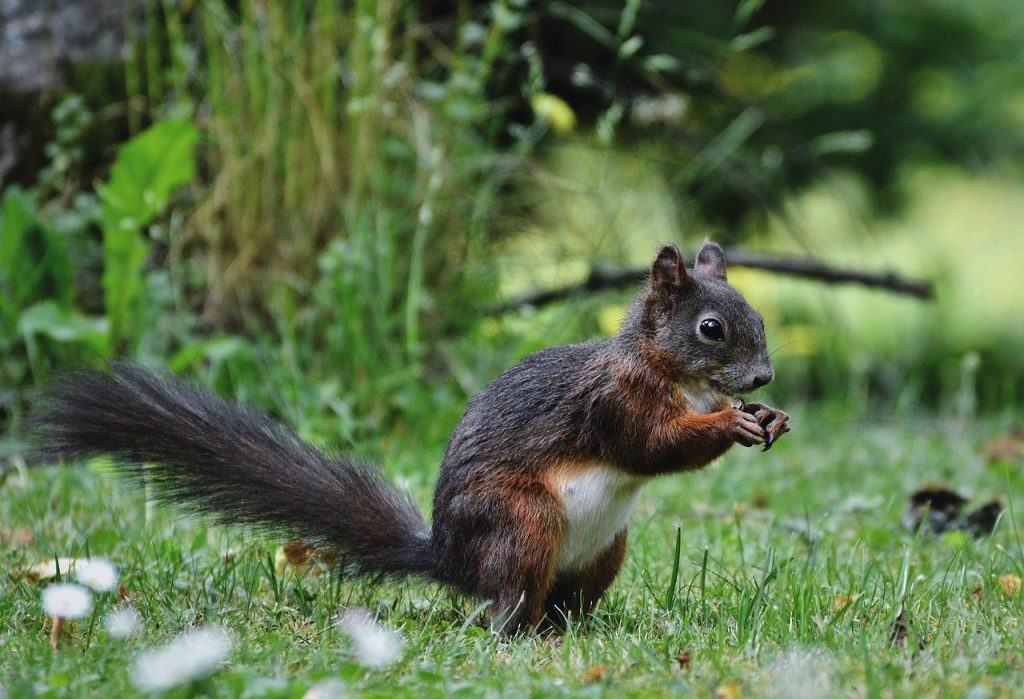Eastern Gray Squirrel
The Eastern Gray Squirrel, as the name suggests, predominantly has a gray coat, although some can be brownish-gray or even black. Native to the eastern and midwestern United States, these squirrels are often seen in woodlands, urban parks, and gardens. They are expert climbers with bushy tails and white underbellies and often hoard acorns for the winter.
American Red Squirrel
Smaller than the gray squirrel, the American Red Squirrel showcases a reddish-brown coat and a white underbelly. These squirrels prefer coniferous forests found throughout Alaska, the eastern portions of Canada, and the northeastern United States. They are territorial and known for their loud chattering sounds.
Fox Squirrel
The largest of the tree squirrels in North America, the Fox Squirrel is distinguishable by its reddish-brown to gray coat, with a notably bushy tail. They prefer open woodlands, often seen in city parks and large gardens. Their diet includes acorns, hickory nuts, walnuts, and tree buds.
Abert’s Squirrel
Easily recognizable by its tufted ears, the Abert’s Squirrel has a gray to dark brown coat. Native to the mountainous regions of the southwestern United States, they predominantly feed on the seeds and twigs of ponderosa pines.
Western Gray Squirrel
The Western Gray Squirrel sports a distinct silvery-gray coat and a notably white underbelly. Predominantly found in the western regions of the U.S., particularly in California, they prefer oak woodlands and are known for their larger size and bushier tail compared to the Eastern Gray Squirrel.
Arizona Gray Squirrel
Native to parts of Mexico and the U.S. states of Arizona and New Mexico, the Arizona Gray Squirrel is typically found along streams in canyon areas. They have a gray back with a reddish-brown hue on the belly and tail.
Douglas Squirrel
A small tree squirrel native to the Pacific coastal states, the Douglas Squirrel sports a reddish or brownish coat, with variations occurring between its summer and winter fur. They primarily feed on pine seeds and are known for their noisy calls.
Flying Squirrels
Contrary to the name, these squirrels don't truly fly but glide using a flap of skin called the patagium. They are nocturnal and possess large eyes to aid their nighttime activities.
- Northern Flying Squirrel: This species prefers dense woodlands found in northern North America. They have a gray-brown coat and are smaller than the Southern variety.
- Southern Flying Squirrel: Inhabiting the eastern part of the U.S., these squirrels have a grayish-brown coat with a white underbelly. They're known to be more sociable than their Northern counterparts and often share nests in colder climates.
- Humboldt’s Flying Squirrel: This recently identified species is native to the Pacific Northwest. It's very similar in appearance to the Northern Flying Squirrel but is genetically distinct.


